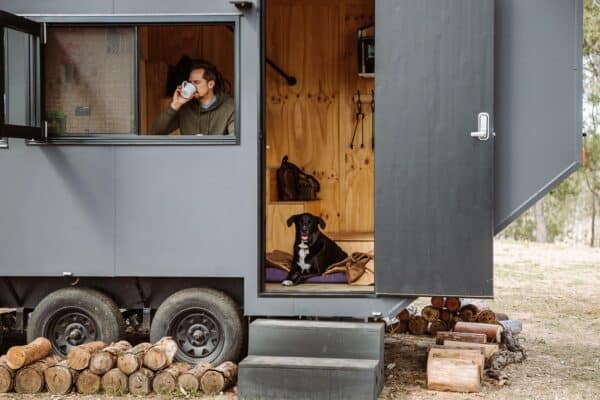Thailand’s island of Phuket is jam-packed with elephant experiences.
They’ve long been a feature of the island, a place where you can ride, bathe, swim at the beach, and pose for photos with them.
For a professed animal lover, it’s hard to resist the opportunity to get up close with these incredible animals.
But the uncomfortable truth is these elephants are living an appalling existence so you can have a unique experience and post about it on Instagram.
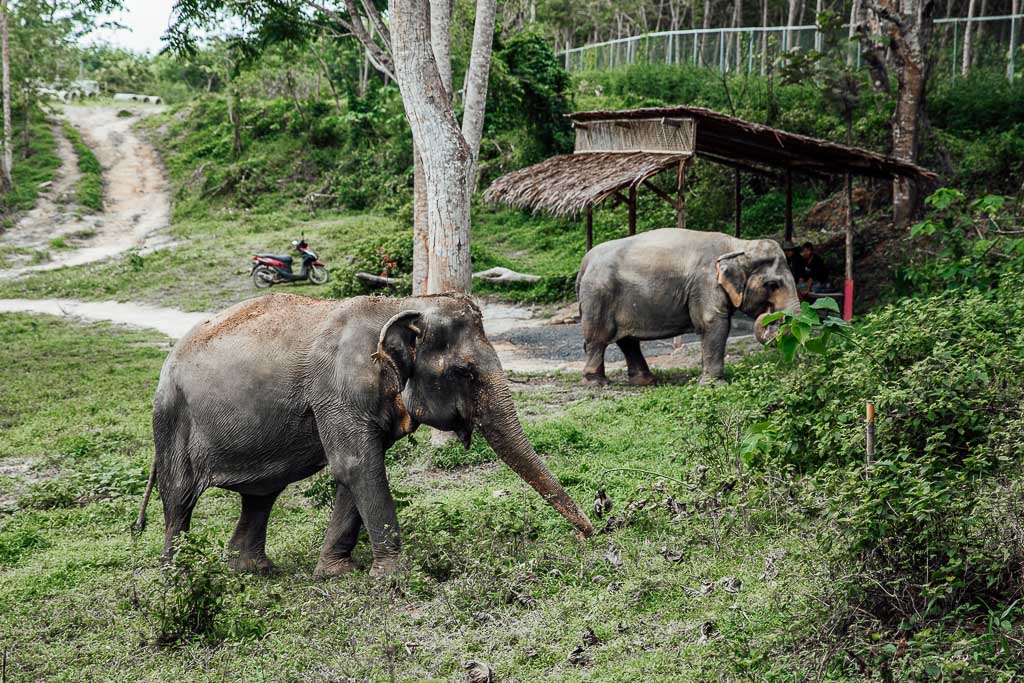
The problem
Currently, there are around 3,800 elephants working in tourism camps in Thailand. Forced to perform and interact with humans, these elephants have endured a lifetime of systematic abuse to make them pliant, all in the name of tourism.
Elephant camps are the result of supply and demand from tourists, which has sadly increased by 30% in recent years, mostly with visitors from China.
What it comes down to is a lack of awareness about how damaging these attractions are for the elephant’s well-being. The solution is more education and offering an alternative form of tourism without harmful interactive elements like riding or bathing.
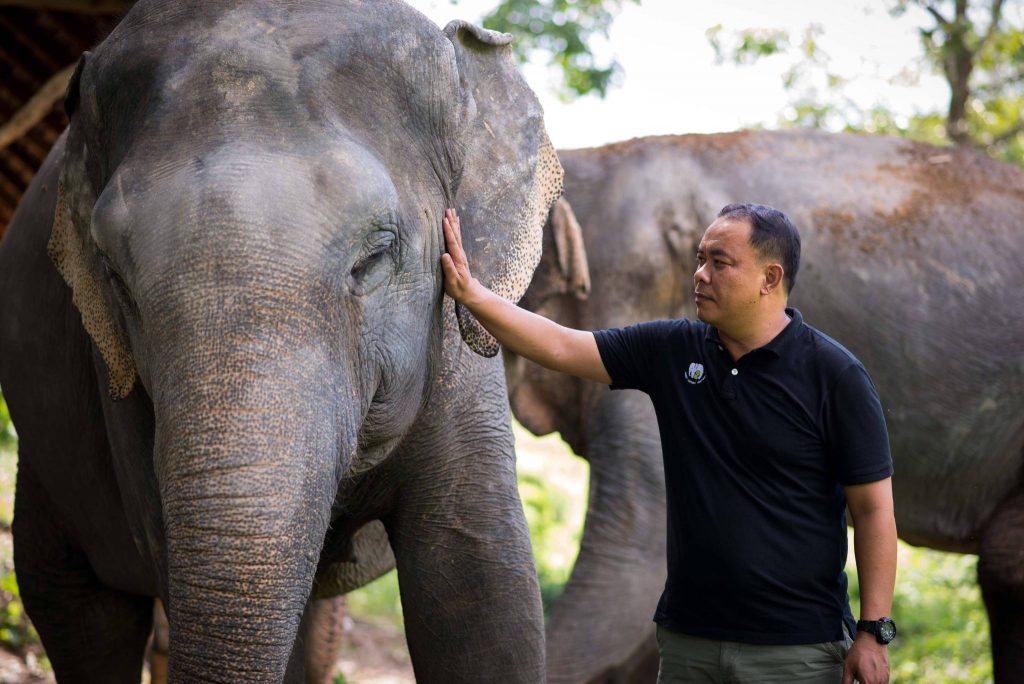
Phuket Elephant Sanctuary founder Montri Todtane
Phuket Elephant Sanctuary
Last month I was fortunate enough to visit one of these places. Bordering the Khao Phra Thaeo National Park, the Phuket Elephant Sanctuary is one of the only ethical elephant sanctuaries in Thailand. They’re working to change the elephant tourism industry in Phuket, hoping to inspire camp owners to follow the same path by showing them there are alternate ways to share elephants with tourists.
The sanctuary was opened in 2016 after Montri Todtane, a former camp owner, sent one of his elephants to retire the Elephant Nature Park, a rescue and rehabilitation center in Chiang Mai.
Founder and conservationist Lek Chailert has been a driving force of change in the industry by inviting elephant riding camp owners to embrace change through her Save the Elephant Foundation’s ‘Saddle Off’ program.
Inspired by Lek’s work, Montri decided to start his own sanctuary in Phuket under Lek’s guidance using her model.
Set on thirty acres of lush tropical jungle, the sanctuary is home to nine elephants, which they hope to grow to twenty-five, the number space can accommodate, over the next few years.
For now, they only take in females, as males can be dangerous and difficult to manage, especially during their middle years. All the elephants at the sanctuary are older and have come from logging and tourism camps where they have worked all their lives. Most have injuries relating to their previous work, cataracts, and blindness from camera flashes and sore backs and legs from years spent carrying tourists and hauling logs.
The sanctuary is a space where these elephants have found freedom and can live out their last years in retirement.

The experience
I was traveling with a group of friends so we opted for a private tour which takes a half day.
You can opt for morning or afternoon, we chose the morning due to the sweltering heat, with a pickup from our hotel at 8am, and arriving at the park just after 9am.
We were greeted by the team of volunteers who presented us with gumboots (there is some muddy walking on the tour) and showed us to a hut overlooking the park for morning tea. While we devoured our snacks, we watched a film about the park and the do’s and don’ts of interacting with the elephants.
It was pretty straightforward. Do stay with your guide, and do watch the elephants at a respectful distance. If they come closer, take a step back. If they run at you, you run away as fast as you can. Solid advice.
The tour is an observation-only attraction, with one opportunity to get close by feeding them.
After washing our hands, we were taken outside where the majestic Tong Kwaw awaited us behind a barrier (for our safety and her comfort) for her morning treats.
We took turns feeding her fruit at a respectful distance and I was completely overcome. You can’t really grasp how big an elephant is until you’re standing face-to-face with one. It was one of the best travel experiences I have ever had. Tong Kwaw spent twenty years working in a riding camp, now, her days are filled with baths, snacks, and chilling in the jungle.
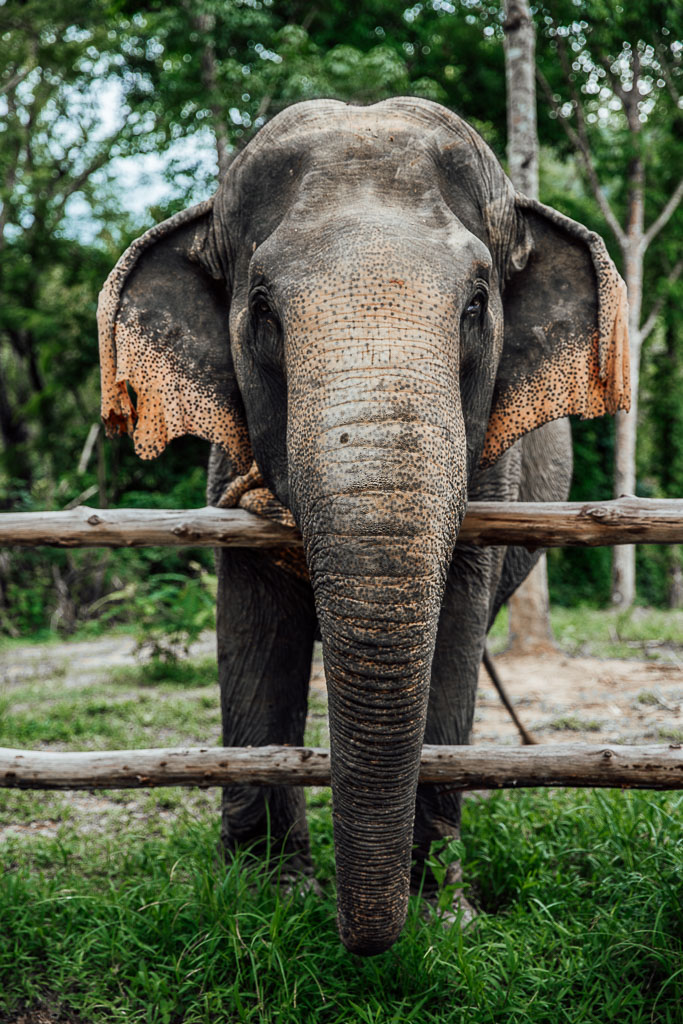
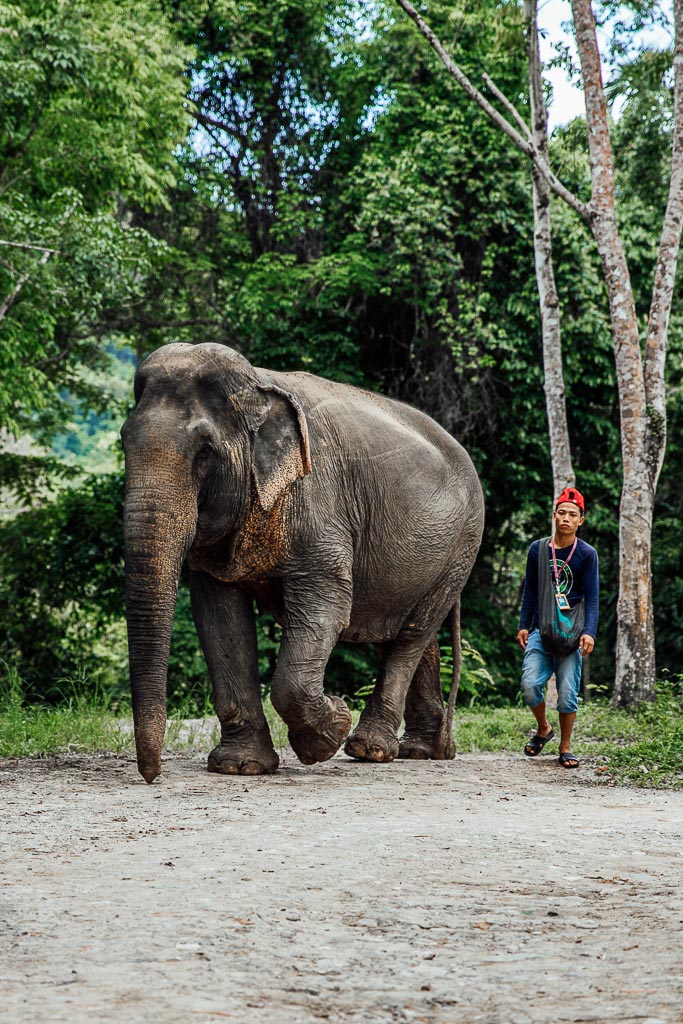
After Tong Kwaw had her fill, we took a walking tour of the park to see the rest of the herd. It was a hot day, but the walk was not too strenuous, and anyone with a moderate amount of fitness can undertake the tour.
The elephants have their own personalities and some with fears leftover from their working days, so they don’t all hang out in a large herd and mostly keep to their own spaces in the park.
Two of the ladies Kannika and Madee (pictured at the top) are besties and love to keep each other company. Sai Tong below was having a great time clearing some of the small trees with her large body. I could see why they’re called the architects of the jungle!
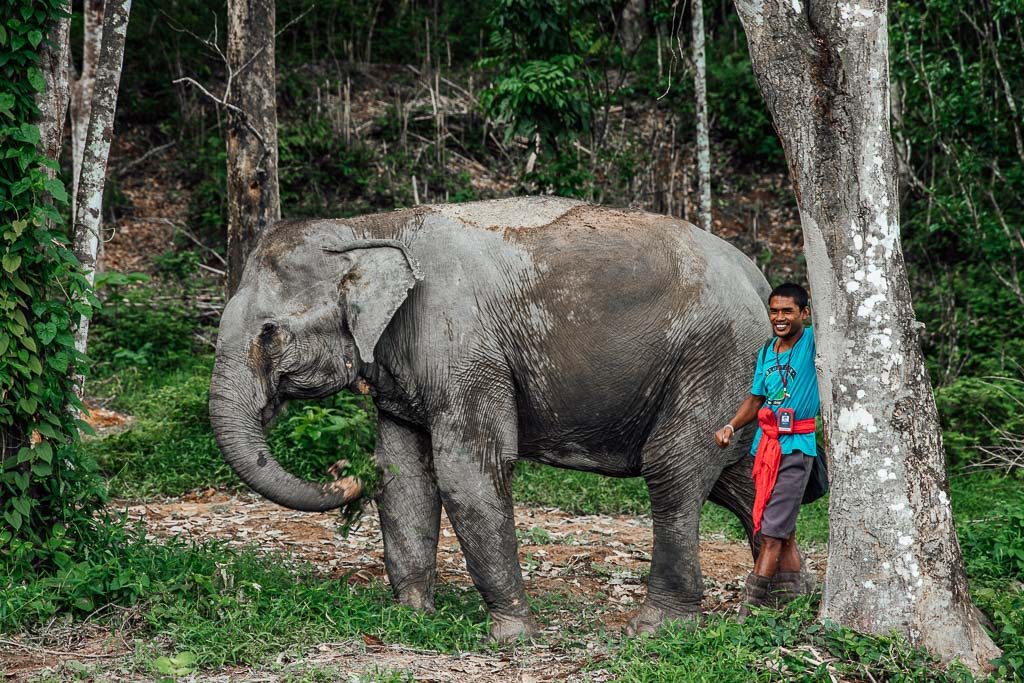
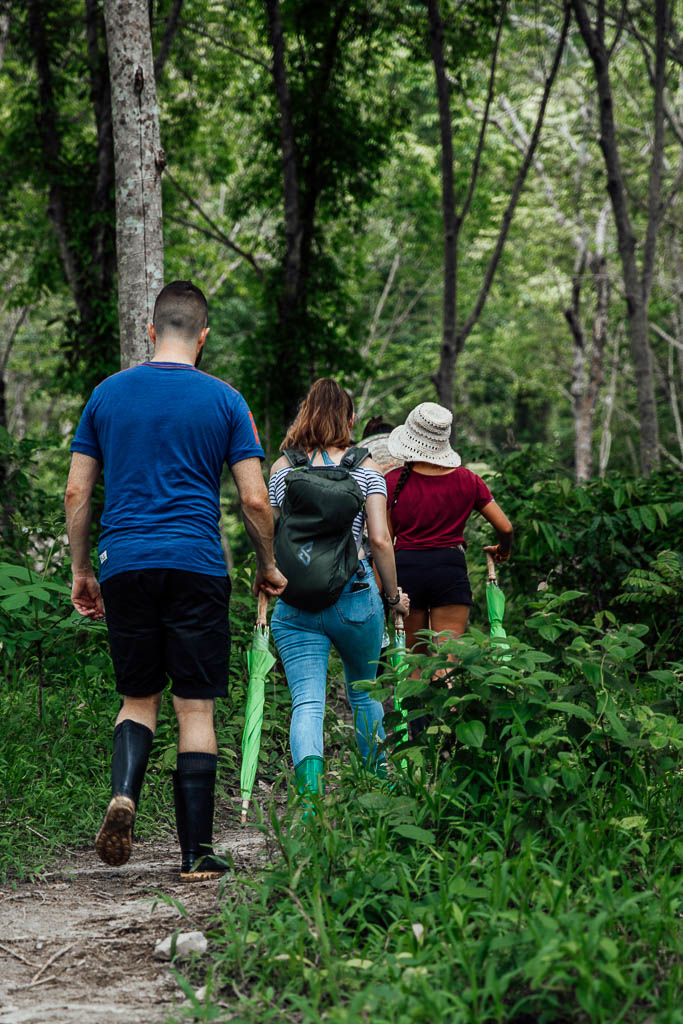
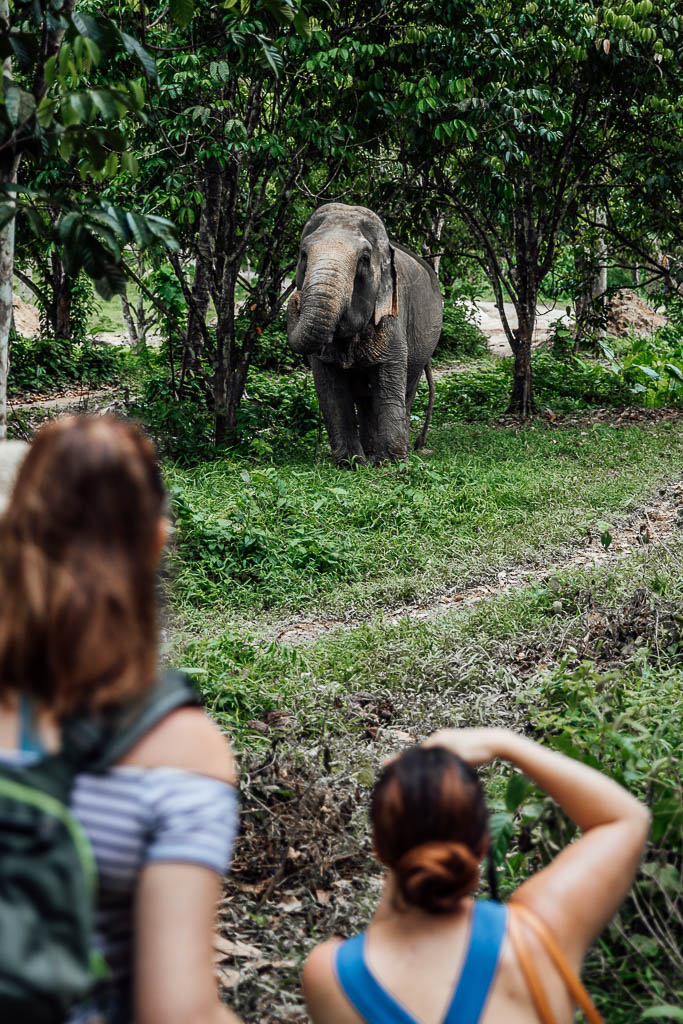
There’s a large lake in the middle of the park that the elephants love to relax in. We sadly did not get to see them bathe, but was a testimony to how the sanctuary operates.
They don’t force the elephants to perform a behavior just because there are paying tourists watching.
For the most part, the elephants are free to roam the park under the watchful eyes of their own personal mahouts, only going into an enclosure for an hour at lunch while the mahout takes a break.
There was a lot of construction happening with plans to build a series of observation platforms and a treetop walkway which will eventually snake through most of the park, allowing the elephants to be observed and not disturbed.
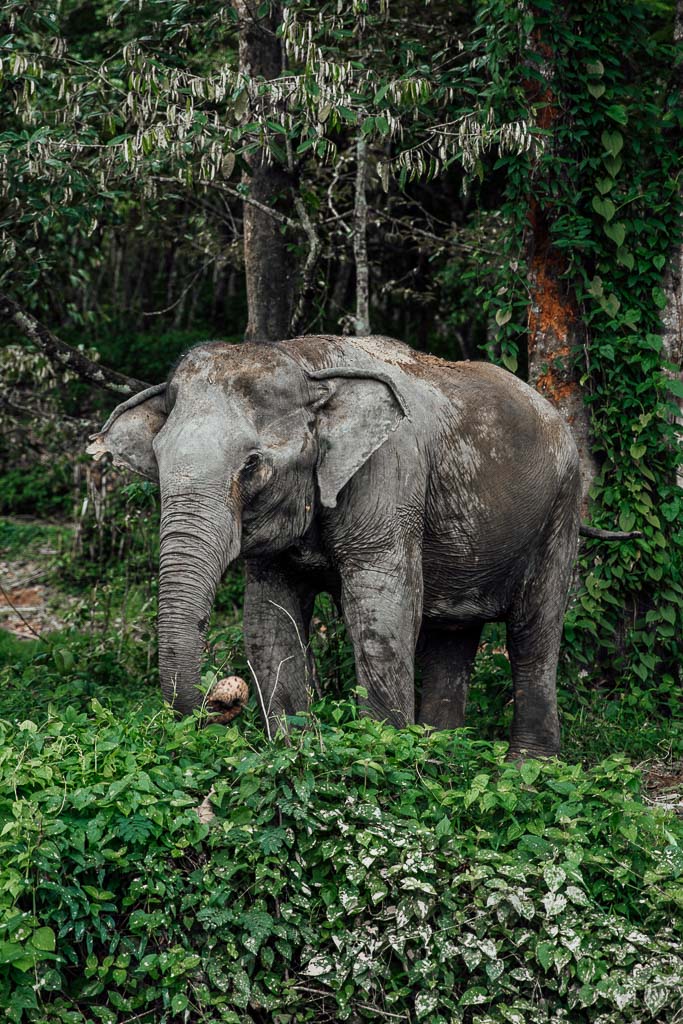

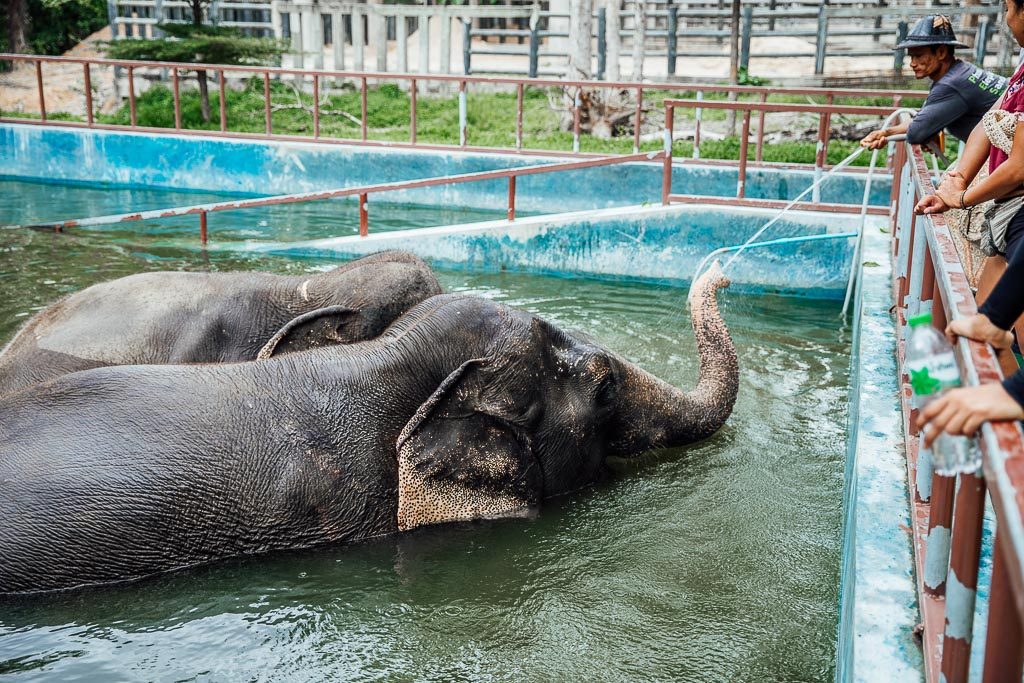
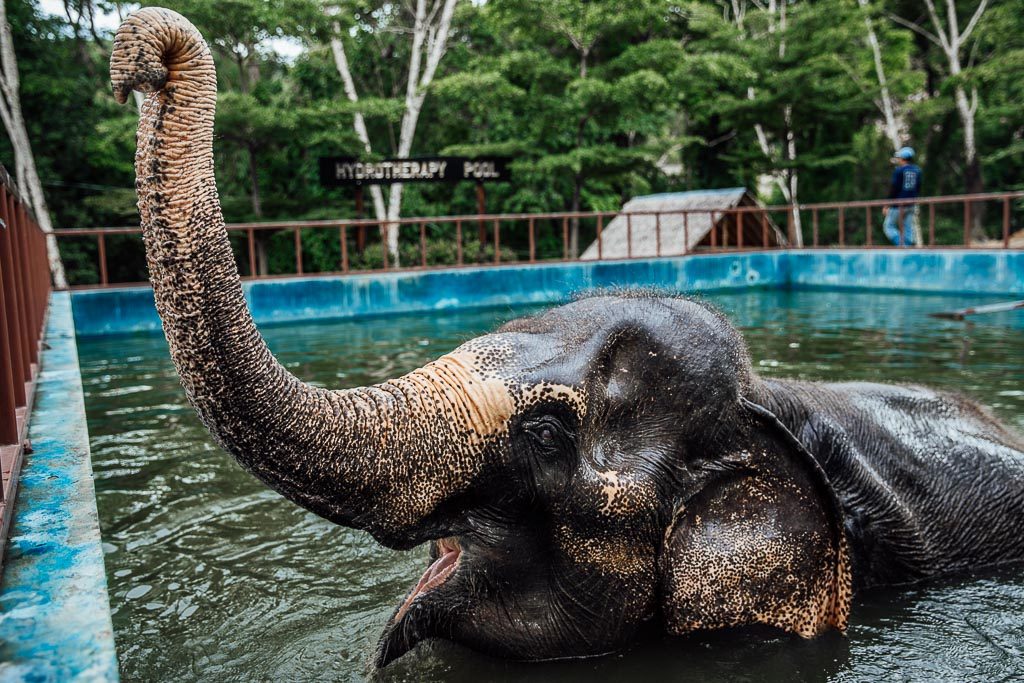
We finished up the tour watching these two ladies having their daily hydrobath before retiring to their enclosure for lunch. Given the open nature of the park, the elephants also sleep in the enclosures, so they don’t wander off in the night.
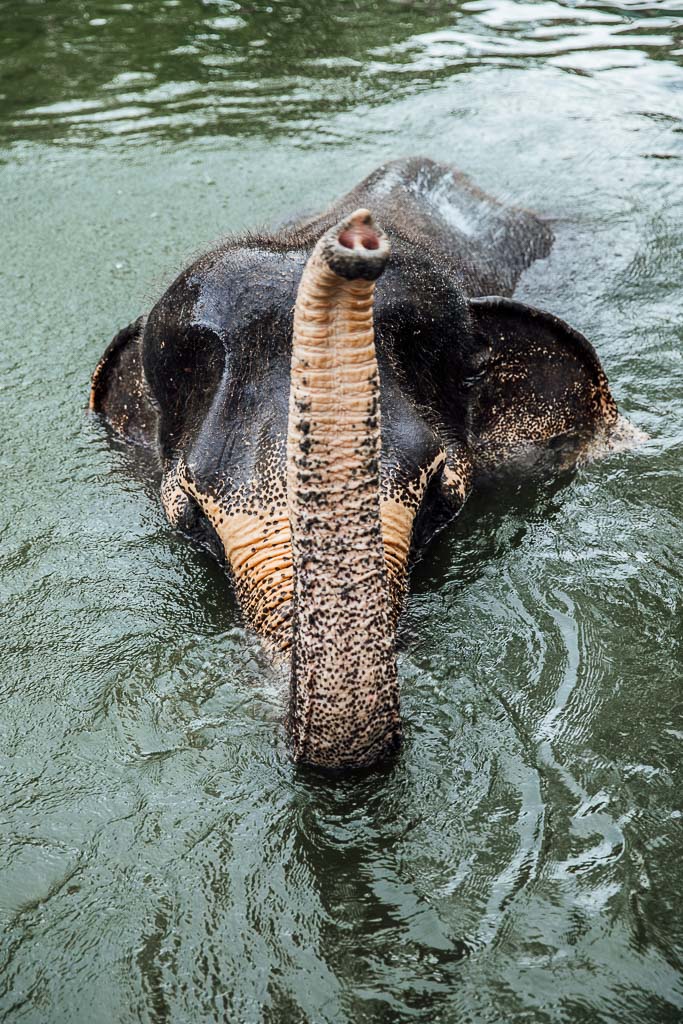
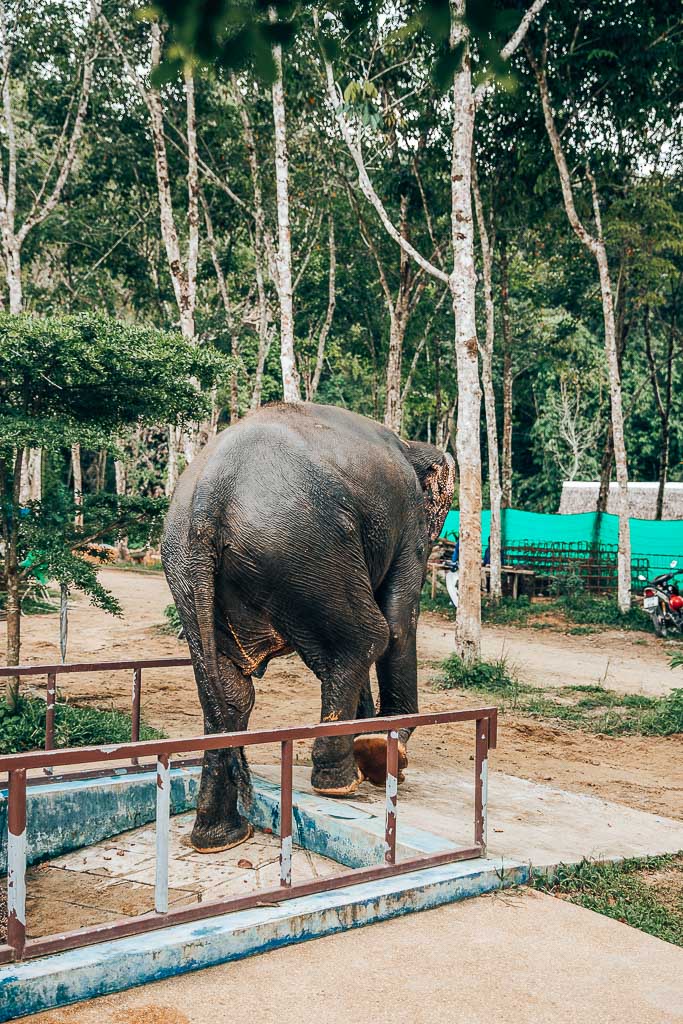
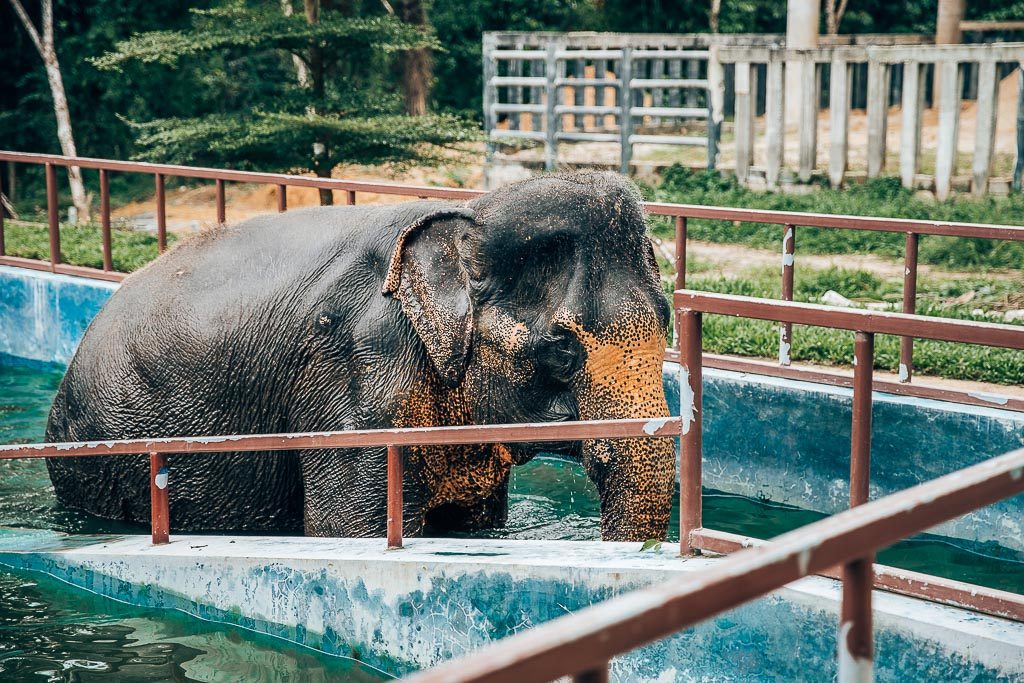
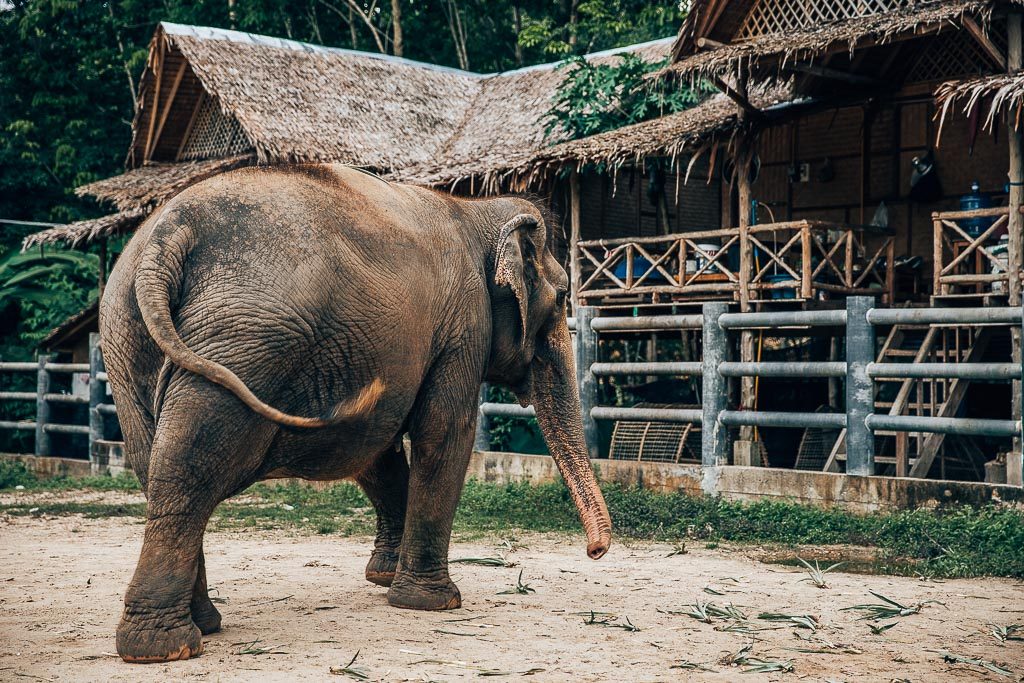
I watched this one sift through her fruit basket, picking up and discarding every piece until she came up victorious with the one she’d been searching for. Turns out she loves cucumbers!

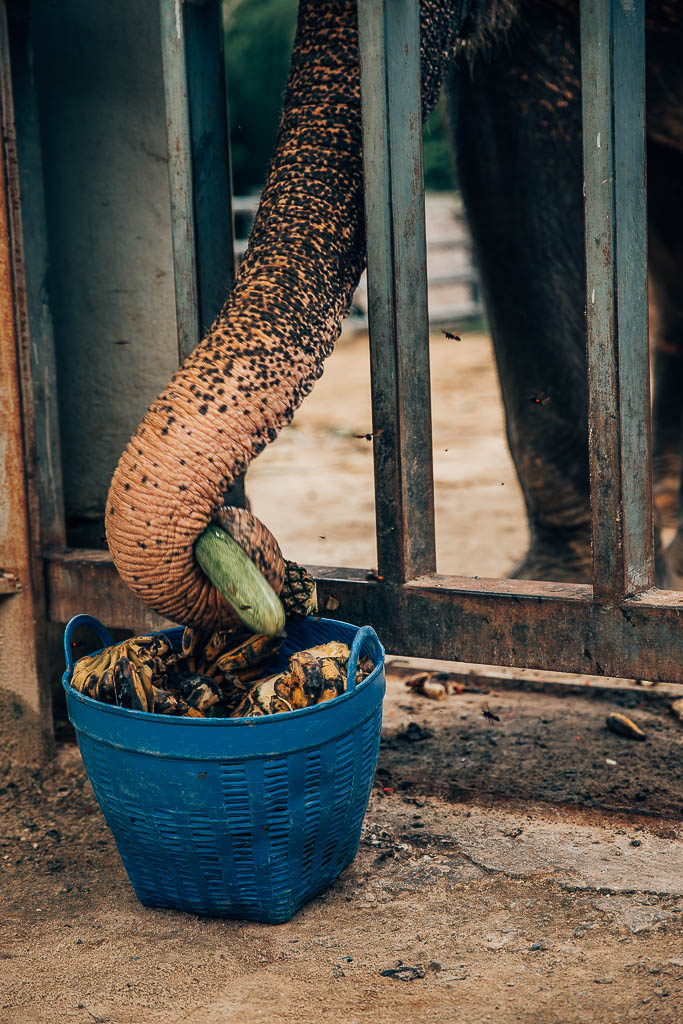
We wrapped up the day with a vegetarian feast spread across the table on our own private balcony overlooking the jungle. The food was phenomenal and it was the perfect way to wind down before heading back to the hotel.
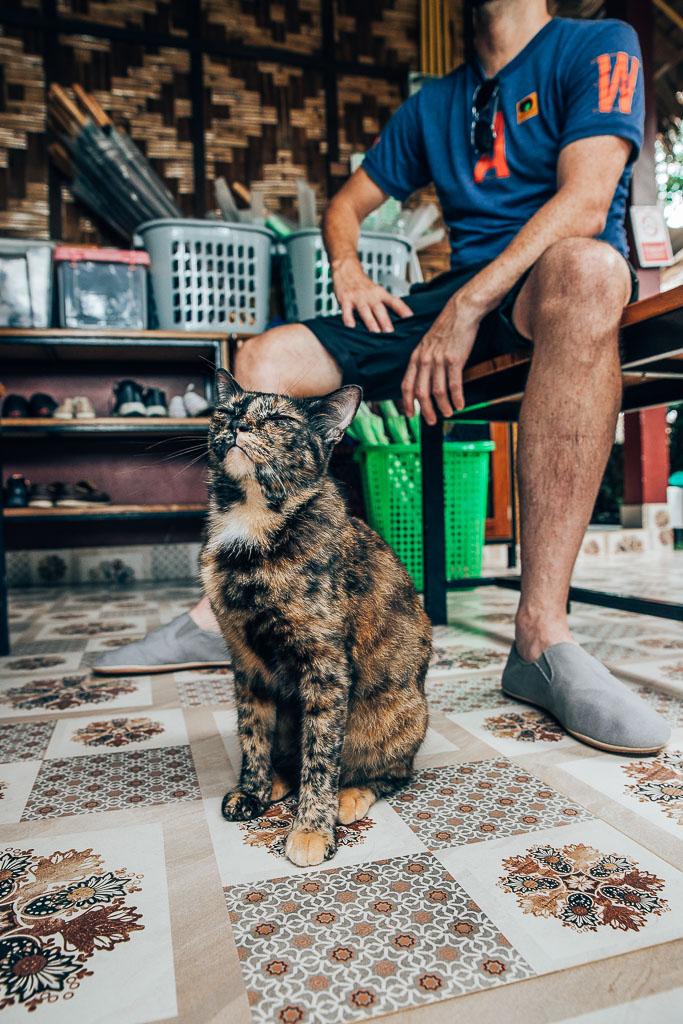
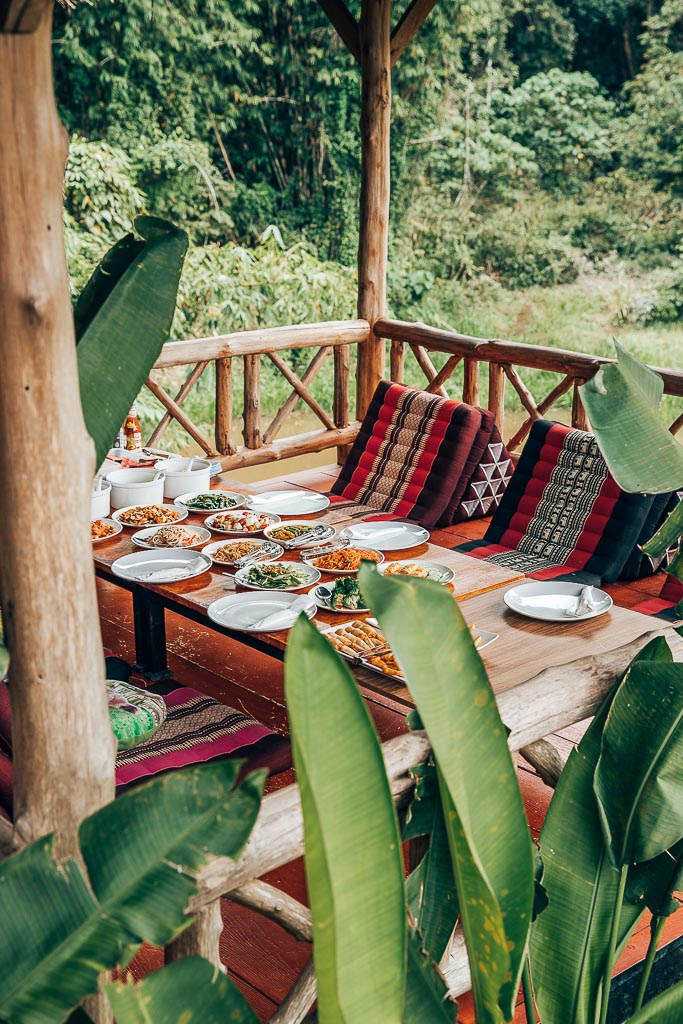
Do I recommend it?
Absolutely.
Ideally, animal tourism would not exist at all, and these animals should spend their days left alone.
But a broken elephant cannot be released into the wild and sanctuaries need funds for their upkeep. Places like Phuket Elephant Sanctuary and Elephant Nature Park have a vital role to play in creating change in the industry. Educating tourists, transitioning the elephants into a safe space, and helping the mahouts find employment.
The industry as a whole has a long way to go, but we can play our part by supporting sanctuaries like this and educating others about what to look for when they do want to have an elephant experience in Thailand.
Learn more about the sanctuary and how to visit here.

